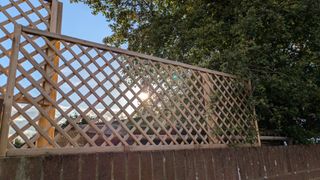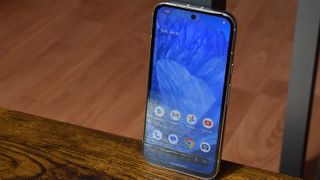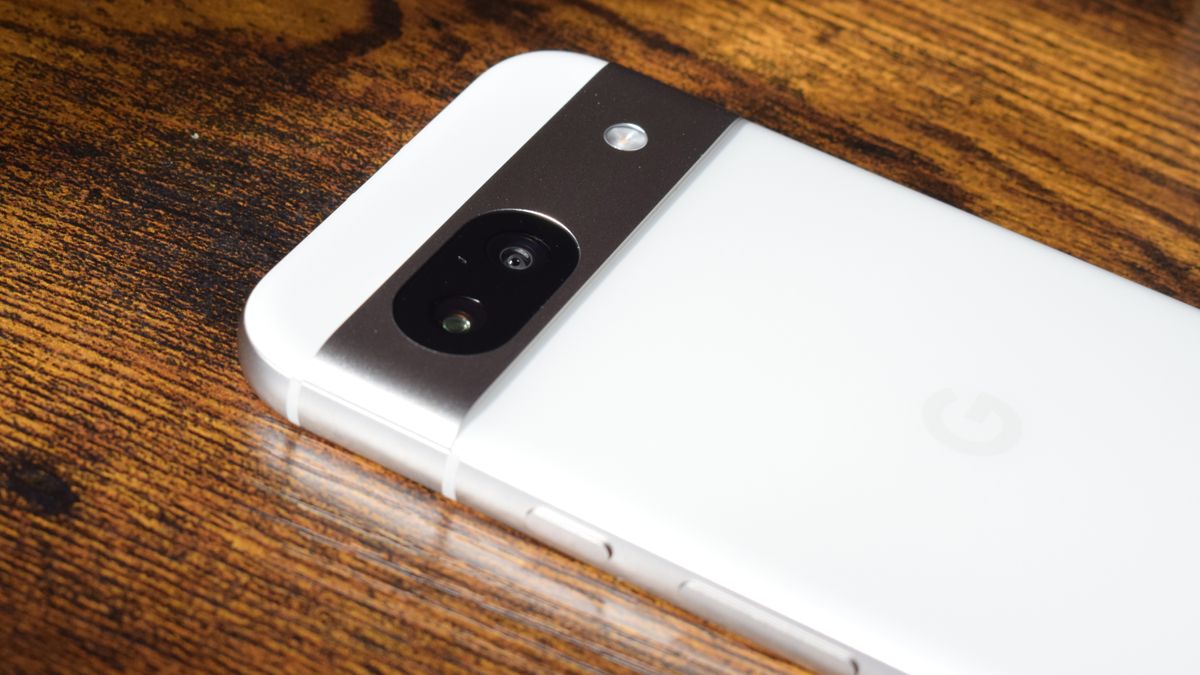Google’s Pixel 8a is arguably the best ‘budget’ smartphone of the year thanks to its innovative use of AI and appealing $549 price tag.
The ‘a’ series of Pixel phones usually condenses the best bits of the flagship models into a cheaper version. This usually means dropping one of the camera lenses, using more affordable materials for the chassis, and having less storage space. However, for the 8a, Google has retained all the best software tools, so you get features like the Magic Eraser for considerably less.
Inside, the 8a features the same Tensor G3 chipset as the Pixel 8 and 8 Pro, with 8GB of RAM. You can choose 128GB or 256GB of storage and the battery is bigger than the Pixel 7a at 4492mAh. Charging speeds are still 18W when plugged in and 7.5W for wireless charging.
Google Pixel 8a review
Google Pixel 8a: Design
- Actua display
- Aesthetically appealing
- Under the screen fingerprint reader
Compared to the Pixel 8, there are some modest changes on the 8a. The ‘a’ models always come with little tweaks and surprises as it’s usually launched around six months later. These are mostly for better, but occasionally for worse. However, we are pleased to report that the 8a is a more aesthetically appealing handset with rounder edges and neater lines. And it’s also lighter than the 7a, by 6gs.
The horizontal camera bar is still a long slab of aluminum that cuts across the plastic back cover, though it gets more refined each year and the Pixel 8a’s version doesn’t protrude quite as much as the 8 or the 7a did.
Along the right-hand side, you have a power button and a volume rocker, with a USB-C port on the bottom and a sim tray on the lower side of the left. There’s no space for a microSD card or a 3.5mm headphone jack, and it comes in four colors; Obsidian (black), Bay (blue), Aloe (green), or Porcelain, like our review unit.
Specifications
Price: $549
Screen size: 6.1in
Weight:188gs
Memory: 8GB
Battery life: 23 hours+
Storage: 128GB or 256GB
Warranty: 1 year
Operating system: Android 14
Display: OLED, 120hz, 1080 x 2400 pixels
CPU: Google Tensor G3 (4nm) chip, Nona core 1×3.0 GHz Cortex-X3
Ports: USB-C
Dimensions (HWD): 152.1 x 72.7 x 8.9mm
Once again, there is an under-the-screen fingerprint reader. Historically, this feature has not worked very well on Pixel phones, and again, it isn’t perfect. Any slight moisture on the finger or thumb can confuse this system, and there are times when it simply doesn’t work, no matter how dry your digit is. You’ll be thankful for the face unlock feature, which does seem to work without a hitch.
For photography, the 8a has the same camera setup as the 7a with two rear lenses – a 64MP main lens and a 13MP ultrawide one. There is also a 13MP selfie lens embedded in the display. The display itself is an OLED panel with a 2,400 x 1,080 resolution. The key difference is the ‘Actua’ display, which has a higher refresh rate than previous models of Pixel, allowing the 8a to go up to 120Hz. For reference, the 7a only had 90Hz.
Google Pixel 8a: Camera and photography

- Rich in color and detail
- 13 Megapixel ultrawide lens
- 64 Megapixel main lens
Considering its price, the Pixel 8a’s photography capabilities are fantastic. The 64MP main lens captures images rich in color and detail, and even when shooting towards the sun, it still pulls in minor details. The supporting lens is also of high quality: A 13MP ultrawide lens that takes in the best of the main lens to create detailed wide-angle images.

Sky shots are clear and crisp, with very little visual noise; in the morning, we found that we could capture fairly decent images of a translucent moon. There is a limit on how much detail you can capture from above as there is no telephoto lens and the maximum zoom makes everything fuzzy — too fuzzy for the AI software to fix. A clear night with a full moon or more visible stars will likely yield better results. There were some Pixel 8a users in northern towns and cities in the UK who were able to capture high-quality images of the aurora borealis not that long ago.

You may well be sick of hearing about ‘AI’ as it’s everywhere, but the artificial intelligence software on the Pixel 8a is worth your time, particularly if you love point-and-shoot photography and playing about with various after-effects. Everything you capture with the main image is ‘enhanced’ within about 20 seconds after you hit the shutter button. Blurred edges are smoothed, details are ironed out, and in some cases, you get options for generative AI edits.
There is a ‘best take’ which works really well for portraits and group shots of people. It essentially uses generative AI to present you with different or better facial expressions so everyone is smiling, rather than, for example, having one person not looking at the camera or expressionless.
Best take is included in the tools section along with the now iconic Magic Eraser and the newer Magic Audio Eraser which scrubs unwanted audio for videos. For video in general, the setup is exactly the same as the Pixel 7a, in that you can shoot at 4k, up to 60fps, or 1080p up to 240fps.
Google Pixel 8a: Specs and performance

- The fingerprint reader isn’t seamless
- Over 23 hours of battery life
- Google’s Gemini Nano AI model support
The 8a has the same Tensor G3 chip as the 8, so it should be no surprise that its performance is largely the same. Where other mobile processors, such as the iPhone A17 Bionic, might record higher benchmark scores the Tensor is more about sending power where it needs it, so your battery is optimized, your AI features work smoothly, and nothing is really wasted. In Geekbench 5 the 8a scored 1,616 for single core and 4,163 for multi-threaded workloads, almost identical to the Pixel 8 and, as we already stated, far behind the iPhone 15.
We did notice some lag when opening apps and the fingerprint reader is still not as seamless as it could be, but overall, the Pixel 8a performs much better than one would expect for a mid-range device.
What’s more, the Pixel 8a also supports Google’s Gemini Nano AI model. This isn’t enabled by default; annoyingly, you need to activate developer options in the settings. However, once it’s up and running, your device has on-device AI features such as intelligent and context-aware smart replies and transcript summaries. More features will come in the coming months and years, but for now, it’s very simple stuff—all fairly useful nevertheless.
There is a larger battery in the 8a than there was in the 7a, yet the performance is almost identical. In a looped video test, the 8a lasted just under 24 hours. But in real terms, no matter how far we went or for how long, we hardly used up much of the 4492 mAh battery’s capacity. The 8a has staying power and can do an all-night star-gazing session if need be. If you use the image editing tools and stream lots of content, you will see it almost double its power consumption, but we found it still made it beyond a normal working day.
Should you buy the Google Pixel 8a?
It’s worth being reminded that the Pixel 8a is a ‘budget’ smartphone because there are parts of it that operate and feel on a much more premium level. The camera setup is very impressive, the AI features are eye-catching, and the battery runs and runs. The only negative is the display, but that’s largely because there are better screens available at this price point. You won’t, however, find a better camera setup for under $500.
Another plus for the Pixel 8a is that users will receive seven years of software updates and security patches – matching that offered for the 8 and 8 Pro. This is very unusual for a sub-$500 smartphone, making the Pixel 8a something of a long-term investment, and not just a two-year or 18-month daily driver. This is affordable A-grade quality.
If the Google Pixel 8a isn’t for you
If you like Google’s Pixel range but want more lenses with higher resolution, then the Google Pixel 8, or Google Pixel 8 Pro is the one for you. But if you’re deep into Apple’s iOS, then the iPhone 15 is the most affordable alternative and includes much of the camera prowess found in last year’s Pro model. There are, however, cheaper options if you look at older and refurbished models that can provide similar performance, such as Huawei’s P30 Pro.














/https://tf-cmsv2-smithsonianmag-media.s3.amazonaws.com/filer_public/d1/82/d18228f6-d319-4525-bb18-78b829f0791f/mammalevolution_web.jpg)






Discussion about this post